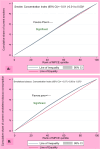Rural-urban disparities in tobacco use among middle aged and elderly Indian adults: a multivariate decomposition analysis
- PMID: 40826072
- PMCID: PMC12359880
- DOI: 10.1186/s12889-025-23937-0
Rural-urban disparities in tobacco use among middle aged and elderly Indian adults: a multivariate decomposition analysis
Abstract
Background: Globally, rural areas have a higher prevalence of tobacco consumption compared to urban areas. The reasons for this are poorly known but include individual, demographic, socio-economic, cultural and environmental factors. Among middle aged and elderly individuals in India, we estimated the rural-urban disparities in current smoked and smokeless tobacco use and conducted a decomposition analysis to identify the underlying determinates that contributed to the disparities.
Methods: Data from Longitudinal Ageing Study in India, wave 1 (2017-18) of adults aged more than 45 years was utilised in this analysis. The weighted prevalence of current tobacco use was estimated. Inequalities in tobacco consumption were disaggregated as per wealth index using the concentration index. Multivariate decomposition analysis was conducted to determine the extent to which different determinants of tobacco use (explanatory variables) contributed to rural-urban disparities in tobacco consumption (outcome variable). p < 0.05 was considered significant.
Results: The weighted prevalence of smoked tobacco use was 13.10% (95% CI: 9.35-18.05%) across India with a rural-urban absolute difference of 7.32%. The weighted prevalence of smokeless tobacco use was 20.43% (95% CI: 15.75-26.06%) with a rural-urban absolute difference of 10.79%. Smoked and smokeless tobacco consumption was concentrated among the poor with concentration indices of -0.01 and -0.07 respectively. Differences in the distribution of the determinants accounted for 59.36% of the difference in smoked tobacco consumption and 57.82% of the difference in smokeless tobacco consumption in rural and urban areas. For smoked tobacco, differences in educational status (41.30%), gender (7.25%) and caste (6.04%) were key contributors to the difference, while for smokeless tobacco, region of domicile (22.17%), educational status (20.08%) and occupational status (9.28%) contributed the most.
Conclusion: Tobacco use was found to be more prevalent in rural than urban areas and among the poorer wealth quintiles. Differences in the prevalence of various socio-economic and cultural factors were found to contribute to the rural-urban differences in tobacco consumption.
Keywords: Decomposition analysis; Disparities; Elderly; LASI; Middle aged; Rural; Smokeless tobacco; Smoking; Tobacco; Urban.
© 2025. The Author(s).
Conflict of interest statement
Declarations. Ethics approval and consent to participate: The Indian Council of Medical Research (ICMR)’s Central Ethics Committee on Human Research (CECHR) granted ethical permission for the LASI survey. Since the present study involved a secondary analysis of the data from LASI, it did not require separate ethical approval. The LASI study was performed in line with the principles of the Declaration of Helsinki. The survey agencies that carried out the original field survey for data collection obtained prior informed consent (signed and oral) from eligible respondents as well as from the legal guardians of illiterate participants for biomarker testing and interviews. Consent for publication: Not applicable. Competing interests: The authors declare that they have no competing interests.
Figures
Similar articles
-
Prescription of Controlled Substances: Benefits and Risks.2025 Jul 6. In: StatPearls [Internet]. Treasure Island (FL): StatPearls Publishing; 2025 Jan–. 2025 Jul 6. In: StatPearls [Internet]. Treasure Island (FL): StatPearls Publishing; 2025 Jan–. PMID: 30726003 Free Books & Documents.
-
Portion, package or tableware size for changing selection and consumption of food, alcohol and tobacco.Cochrane Database Syst Rev. 2015 Sep 14;2015(9):CD011045. doi: 10.1002/14651858.CD011045.pub2. Cochrane Database Syst Rev. 2015. PMID: 26368271 Free PMC article.
-
Tobacco packaging design for reducing tobacco use.Cochrane Database Syst Rev. 2017 Apr 27;4(4):CD011244. doi: 10.1002/14651858.CD011244.pub2. Cochrane Database Syst Rev. 2017. PMID: 28447363 Free PMC article.
-
Inequality in modern contraceptive use and unmet need for contraception among women of reproductive age in Zambia. A trend and decomposition analysis 2007-2018.Reprod Health. 2024 Dec 9;21(1):181. doi: 10.1186/s12978-024-01909-8. Reprod Health. 2024. PMID: 39654062 Free PMC article.
-
Prevalence and factors associated with tobacco use among pregnant and breastfeeding mothers in India: insights from the National Family Health Survey-5 (2019-21).Front Public Health. 2025 Jun 6;13:1495522. doi: 10.3389/fpubh.2025.1495522. eCollection 2025. Front Public Health. 2025. PMID: 40547460 Free PMC article.
References
-
- Tamil Selvan S, Yeo XX, Van Der Eijk Y. Which countries are ready for a tobacco endgame? A scoping review and cluster analysis. Lancet Global Health. 2024;12(6):e1049–58. - PubMed
-
- Swasticharan L, Arora M, Sinha P, Ray C, Munish V, Shrivastav R. Report on tobacco control in India 2022 (Vol 22). Ministry of Health and Family Welfare, Government of India. Available from: https://ntcp.mohfw.gov.in/assets/document/surveys-reports-publications/.... Cited 30 Jun 2025.
-
- Gupta PC, Arora M, Sinha DN, Asma S, Parascandola M, editors. Smokeless tobacco and public health in India [Internet]. New Delhi: Ministry of Health & Family Welfare, Government of India; 2016. Available from: https://ntcp.mohfw.gov.in/assets/document/surveys-reports-publications/S.... Cited 8 Dec 2024.
LinkOut - more resources
Full Text Sources


